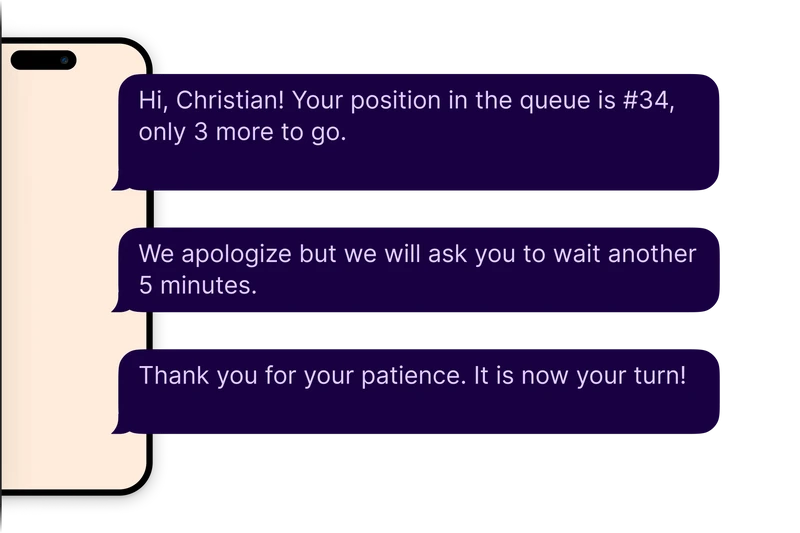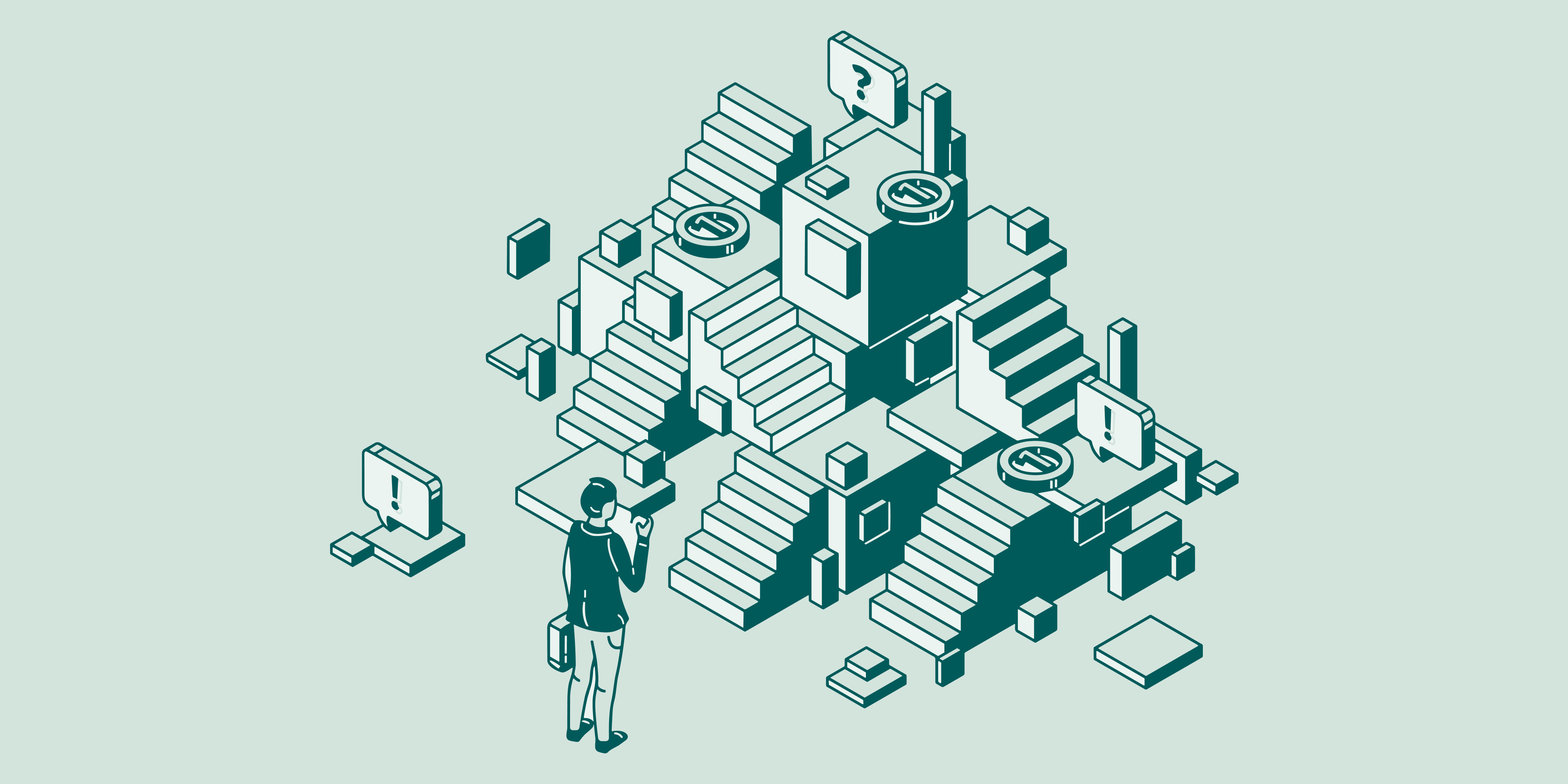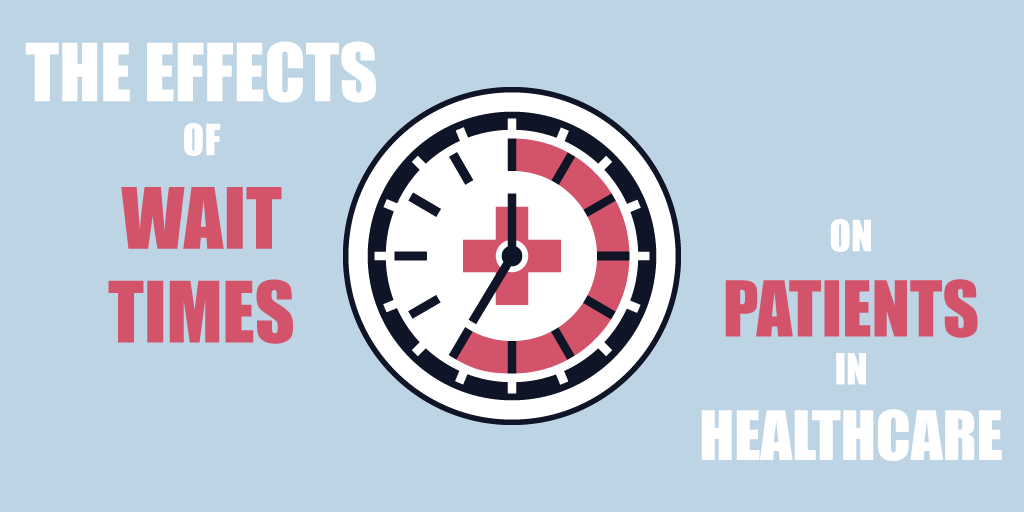Ever stood in a long line and thought to yourself, "There has to be a better way to do this"? That's where queuing theory enters the picture.
Essentially, queuing theory is the study of line formation, how they flow, and how we can improve them. Don't worry, though—this isn't something mathematicians find in the lab. It's something that affects daily life, from waiting at the DMV to getting a coffee.
Understanding how queues work can help companies get people in and out more quickly, reduce frustration, and increase overall satisfaction.
In this beginner's guide, we'll take a look at the basics of how queuing works, define important terms in simple terms, and show you how this theory is used in real life.
What Is Queuing Theory?
Queuing theory is all about studying how individuals wait, why individuals wait, and how systems make individuals wait—be that the hospital triage queue, the drive-thru at a fast food place, or customer service on a Monday morning.
The entire process started with a Danish engineer, Agner Krarup Erlang, in the early 1900s. He was working for the Copenhagen Telephone Company and needed to determine how many lines of phone you have to ensure that people do not wait forever.
His work was so powerful that phone traffic is now measured in "erlangs"–a unit that bears his name.
Why It Is Still Relevant Today
If you think queuing theory doesn't belong in an out-of-date textbook, think again. The queuing process comes up more frequently than you'd guess: DMVs, airports, clinics, call centers, retail store checkouts, even coffee shops at 8 a.m. on Monday.
And the thing is, how we handle those lines really does impact customer experience. A well-handled line makes people feel taken care of and keeps things moving.
A badly handled one? Frustration in an instant.
Learning about the fundamentals of queuing theory presents companies with the opportunity to better organize—assigning personnel, re-scheduling timetables, or even reconfiguring service arrangements.
That is why uses of queuing theory are so beneficial: it minimizes waiting, maximizes teams, and simplifies the entire process for all involved.
Understanding the Queuing Process
Before we look at some applications of queuing theory, let's have a sense of why a queue is there in the first place. Whether you're working with lines at a store, hospital, or call center, the dynamics just so happen to be eerily the same.
Major Elements of a Queue
All queues, simple or sophisticated, share four broad elements. Consider these the wheels that turn behind the scenes:
Arrival: This is when and how people arrive in the queue. Are they arriving at random? Checking in online? Scheduling appointments? Arrival behavior is the foundation of traffic prediction. Traffic forecasting depends on this.
Capacity: Some systems can serve an infinite number of waiting individuals (think of an online chat line), while others, such as a waiting area in a small clinic, cannot. Understanding your capacity prevents bottlenecks.
Service: Where and how customers are served. It is a customer in a store, a triage nurse in an emergency room, or a support representative on the telephone. Speed and availability of service tend to make or break customer queue experience.
Departure: When service is completed, the customer leaves the system. But how quickly that happens—and whether or not they're satisfied with it—will tell you a lot about your overall queuing process.
Awareness of these elements isn't abstract—It's practical. The more efficiently your queue serves, the more pleasant the experience for everyone involved.
Common Queue Models
Now a bit of theory—but don’t worry, we’ll keep it grounded and practical.
Little's Law
John Little came up with a simple but powerful equation. It connects three things in a queue: how many people are in the system (L), how often they arrive (λ), and how long they stay (W). The formula is:
L = λW
Let’s say you run a restaurant. If 10 people arrive every hour and each stays for 1 hour, that means there are 10 people in the system at any given time.
L = 10 × 1 = 10
This is useful when you’re trying to figure out staffing, seating, or even kitchen flow.
Now, if more people arrive or they take longer to leave, your system fills up.
For example:
If arrival rate doubles and service time stays the same, your queue doubles.
If service time doubles while arrivals stay steady, again—your queue doubles.
You don’t need to memorize this, but understanding how these pieces fit together can help you avoid long waits and crowded lobbies.
Kendall’s Notation
This is a way to describe different types of queuing systems. David George Kendall introduced it, and it uses a simple format:
A/S/c/K/N/D, where:
A for the arrival process.
S for the mathematical distribution of the service time.
c for the number of servers.
K for the capacity of the queue (if not unlimited).
N for the number of possible customers (if not infinite).
D for the queuing discipline (first-in, first-out by default).
In most real-world cases, you only need the first three: A/S/c.
A common example is M/M/1, which means:
Random (Markovian) arrivals
Random service times
One server
You’ll also see models like M/M/c, M/D/1, or M/G/1 depending on how the system behaves.
And remember, you’re not doing this to impress anyone with math. You’re doing it to make life easier for your team and your customers.
Types of Queuing Models Based on Structure
Not all lines are created equal. Depending on how your service flow is set up, the structure of your queuing models can vary quite a bit. Understanding these structures is key to designing a smoother experience—whether you're managing a helpdesk or a car wash.
1. Single Channel, Single Phase
This is the simplest kind of queue you’ll find. One line, one server, one step.
Imagine there's a drive-through car wash: vehicles queue up in one lane, are washed individually, and drive off when finished. No stopping in between. No handoffs. This is simple, clean, and efficient—provided the demand isn't greater than the rate of service.
This kind of model is simple to administer but can easily become a chokepoint if the service time is significant or customer volumes surge. That's why it works best when work is short and routine.
In the queuing theory context, this model is typically expressed as M/M/1—a random arrival and service single-server model. It's one of the most frequently examined configurations and the foundation for learning more advanced queuing processes later on.
2. Single Channel, Multi Phase
Now imagine walking into a bank to open a new account. You first talk to a receptionist, then move to a clerk to fill out paperwork, and finally speak with a manager for account approval. You're still in one queue, but the service happens in multiple steps—this is what queuing theory calls a single channel, multi phase model.
In this structure, there's one line feeding into a sequence of service stages, each handled by a different point along the way. It's common in places where tasks are more complex and can’t be wrapped up in one go.
From the perspective of the queuing process, this model helps balance the workload—each phase handles a specific part of the service. But it also means one slow step can cause the entire system to back up.
This type of queue setup is a great real-world example of the applications of queuing theory in designing services that involve both volume and detail—like banks, clinics, or even immigration counters at airports.
3. Multi Channel, Single Phase
Consider the last time you checked in at the airport. You likely waited in a single line, but got to choose among multiple counters when you got to the front. That arrangement—multiple service points providing the same, one-step service—is an example straight out of the textbook for a multi channel, single phase model.
From a queuing theory standpoint, this model is efficiency and speed focused. The process of service is straightforward but distributed across several agents or stations. It accelerates the movement of individuals without making the process complicated.
These types of queuing model appear everywhere: fast-food restaurants, pharmacy pickup stations, even customer service counters. It's a wonderful example of the way the queuing process can be scaled up without overloading staff or annoying customers.
And it wonderfully identifies one of the real uses of queuing theory—system design for minimizing waiting time while smoothly managing high volume.
4. Multi Channel, Multi Phase
Imagine going into a hospital ER. You fill out the paperwork at the front desk, wait to be seen by triage, then a nurse, then a doctor, and perhaps on for tests—each step managed by a different staffer, in different rooms. And you're not the only one. There are numerous others working their way through the same steps simultaneously, each on their own journey.
This configuration—multiple steps and multiple servers—is referred to as a multi channel, multi phase queuing model. It's one of the more complicated arrangements in the queuing process, but one of the most prevalent in everyday service settings.
From laundromats to big health care operations, this model illustrates just how complex and evolving some service flows are. It indicates how vitally important the uses of queuing theory are—not only to get people along, but to allocate time, resources, and expectations across different stages without complete chaos.
Knowing what is queuing theory in this regard assists teams in mapping the journey more accurately, identify inefficiencies, and refine the experience for all concerned.
Read more - Single-Line Queues Vs Multiple-Line Queues: Which One Is Better?
Queuing Disciplines: Who Gets Served First?
Not all queues move the same way. The queuing discipline defines how people are selected for service—and it can seriously affect wait times, satisfaction, and perceived fairness. Let’s start with the most familiar one.
1. First-In, First-Out (FIFO)
This is the gold standard: you wait in line, you wait your turn, you get served. No cutting, no VIP treatment—just cold order.
Consider supermarket checkout lines, DMV clerks, or post offices. FIFO seems equitable because every person advances based on their arrival time.
Why FIFO succeeds:
Simple to grasp and execute
Fosters fairness and transparency
Curbs frustration (most of the time)
The majority of conventional queuing systems employ FIFO by default, and it usually is where one begins when applying the fundamentals of queuing theory to real-world operations.
2. Last-In, First-Out (LIFO)
Unlike the typical coffee shop queue, LIFO turns it around—the last to arrive is the first to be served.
It’s rare in customer-facing scenarios but makes perfect sense in industries where speed or technical structure matters more than fairness. You’ll find it in inventory systems, where the most recently added item is sold or used first, and in tech environments where processing happens in reverse order (like undo stacks or server requests).
Common use cases:
Stack-based data structures
Warehouse logistics
Emergency patches or rollbacks in IT systems
Nevertheless, in human lines, LIFO tends to be felt as someone jumping the line—maybe efficient but perhaps not universally popular.
3. Priority Queuing
All queues are not equal. Priority queuing gives variable levels of priority to various customers based on urgency, value, or service level.
Who boards first? The response is context-dependent:
In hospitals, emergency patients jump ahead.
At airports, high-status frequent flyers board prior to economy.
In customer support, VIP customers receive priority assistance.
This queuing discipline is more about strategic effectiveness—ensuring that scarce resources are applied where they will be most beneficial. But to prevent it from seeming unjust, open communication is essential. If individuals aren't aware of the system, frustration will arise.
Why Queuing Discipline Impacts Perception
Queuing theory can account for how lines work, but it tends not to address something important—how individuals perceive the waiting.
The discipline behind a line affects perception as much as the literal time spent waiting.
The way queuing disciplines impact experience:
FIFO is easy and just, so individuals believe in it.
Priority queuing may be perceived as unfair unless rules are clear and reasonable.
LIFO may seem disorganized and random in customer-facing services.
The bottom line? Expectation management is part of queue management. A transparent and equitable process doesn't just diminish grumbles—it makes the wait tolerable.
Applications of Queuing Theory in Real Life
Queuing theory might sound like something buried in a dusty textbook, but it quietly powers the systems we rely on every day. Whether it’s reducing long lines or making digital processes run smoother, the applications of queuing theory stretch far beyond academic math. Here’s how it shows up in the real world:
Government and Healthcare
In government services, the cost of long waits is not just inconvenience—it's lost trust. That's where applications of queuing theory can transform how citizens deal with healthcare clinics, DMVs, and city offices.
With virtual queue systems (like Qminder), these industries can:
Intelligently schedule appointments to prevent bottlenecks and last-minute rushes.
Keep waiting rooms quieter and more under control by enabling people to check-in on their phones or kiosks.
Share notifications in real-time to reduce anxiety and improve transparency.

From court houses to immunization centers, putting the queuing process into place allows agencies to serve more people with fewer disorganizations—and a whole lot of dignity.
Retail and Customer Service
Ever walked into a store, saw a huge line, and walked right back out? You’re not alone—and that’s exactly why queuing theory is so important in retail.
Retailers use queuing models to:
Manage peak hours by identifying when customer traffic surges and adjusting staffing accordingly.
Reduce abandonment rates, especially in high-traffic areas like checkout lines or customer service desks.
Streamline customer experience with technology like queue kiosks, customer messaging, or express lanes.
From department stores to banks, and even cannabis dispensaries, queue management affects the way customers perceive service—and whether or not they return.
You might also like - Queuing Theory as Applied to Customer Service
Telecommunications and Technology
Behind every smooth digital interaction is a queue operating behind the scenes. In technology and telecommunications, queuing theory makes it possible to manage huge volumes of data and requests, sometimes in milliseconds.
Some of the most common uses are:
Distribution of load across servers to prevent any one machine from being overwhelmed.
Efficient request handling, like when numerous users access the same site or program simultaneously.
Prioritization of traffic, especially for services such as emergency calls, real-time video games, or video streaming.
These queue models would make the internet slow, unstable, and irritating without them.
Transportation and Logistics
If you’ve ever waited at a busy airport gate or watched packages track their way to your door, you’ve seen queuing theory in action.
In transportation and logistics, it’s used to:
Control vehicle flow through toll plazas, loading docks, or urban intersections.
Streamline processes like baggage handling or customs checks to prevent delays.
Optimize delivery routing, factoring in wait times at each stop to increase efficiency.
From check-in lines managed by carriers to delivery services bringing packages, control of the queuing process makes sure items get in motion—literally—in the right direction.
Psychology of Waiting: Beyond the Math
It's simple to see queues as merely numbers and time—but how one feels waiting counts just as much. The psychology of waiting teaches us that perception usually trumps reality. Two individuals waited for the same 15 minutes, but if one had updates and the other waited in silence, those experiences would feel utterly different.
Let's break down what the science dictates and how contemporary queuing systems leverage this psychology to make waiting less painful—and even enjoyable.
What Science Says About Wait Perception
Not all waiting time is equal. Actually, our brains don't just measure a wait by how long it is, but what's occurring while it's happening.
Unoccupied time feels longer than occupied time. That’s why you’ll often see mirrors near elevators or magazines in waiting rooms—they’re not random; they help the time pass faster.
Uncertainty makes it worse. If people don’t know how long the wait will be, even a short delay can feel endless.
Communication changes everything. A simple update—like a text saying “You’re next”—can reduce frustration and help people stay calm.
Example: Several clinics or service outlets already utilize SMS or electronic screens to provide live updates. Even if the waiting time isn't shorter, it is more tolerable since individuals are informed.
How Queuing Systems Enhance Experience
When individuals are aware of what to anticipate, they're more inclined to wait. Forecastability is key.
Intelligent queue systems take this into consideration:
Self check-ins provide individuals with a feeling of agency from the beginning. No necessity to plead with someone sitting behind a desk or hover in an awkward line.

Scheduled appointments or projected wait times establish definite expectations, alleviating anxiety about "not knowing."
Instantaneous status reports—on a screen or as texts—assist in transforming passive waiting into an active, engaged process.
And here's the magic that is subtle: when individuals sense that their time is being respected, they will score the service more highly even if they waited just as long.
Also read - The Psychology of Queuing As a Key to Reducing Wait Time
Making Queuing Work for You
Understanding the queuing process isn’t just academic—it’s a practical way to make service smoother, faster, and more human. Whether you're managing walk-ins at a government office or juggling customer flow at a busy retail store, queues shape the experience more than you think.
It's time to look beyond just the physical line and start thinking in terms of flow, communication, and perception.
If you want to put queuing theory into practice—without diving into equations—Qminder is built for that. Smart, simple, and made for real-world use.
Try Qminder today and see how better flow leads to better service.
Managing a line is usually reactive—you see a crowd, you try to handle it. Queuing theory is proactive. It helps predict patterns, prepare for busy times, and design systems that prevent long lines in the first place.
Absolutely. You don’t need to run a hospital or airport to benefit. Even a small clinic, salon, or government help desk can improve the flow of people and reduce no-shows by understanding how queues form and how to manage them smartly.
They assume “first come, first served” is always best. But without considering who’s waiting, how long they’re waiting, and how expectations are managed, that basic system can lead to frustration. The right queuing discipline makes a big difference.






